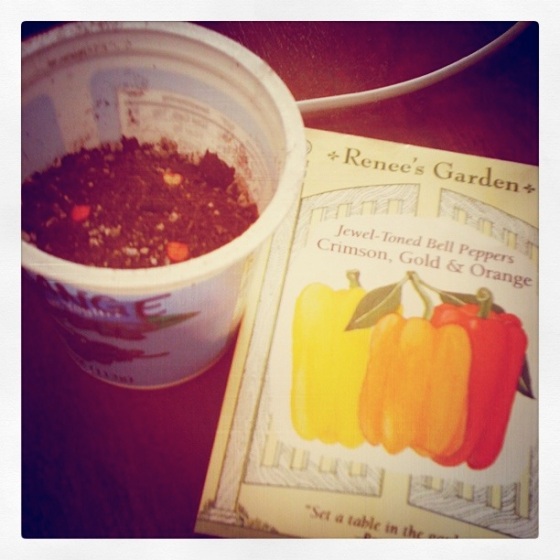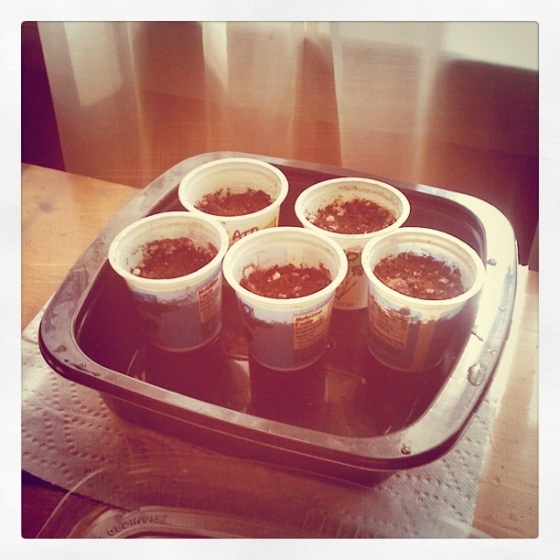Jordan and I finally did another gardening activity together: we started some seeds! It was time to start growing the first of our babies–bell peppers, tomatoes, and jalapenos. (I almost forgot about the jalapenos because they weren’t included in my Sprout Robot schedule! What kind of Robot are you??)
First, we read the back of the seed packets just to be sure there wasn’t anything special, like seed scarification or soaking, that needed to happen. Jordan also read the starting soil bag and later told me to “water gently.” (Success! He’s learning on his own!)
Next, Jordan filled our sterilized Trader Joe’s yogurt cups with the starting soil and I placed three seeds into each container. We decided to start an Orange Bell Pepper plant this week and start a Red & Yellow Bell Pepper in the next two to four weeks so our potential yield will be staggered. We like bell peppers, but not so much that we want three varieties producing at the same time.
We also planted two cups of jalapeno and tomato seeds. Since we’ll only transplant the healthiest of the seedlings, we thought we might want to try two jalapeno plants and two tomatoes, just in case. I’m actually starting to wonder if we should start another tomato; growing up with an Italian home chef for a mama taught me one can never have enough tomatoes.
After we pushed the seeds into the appropriate depth in the starting soil, we “watered gently” and placed the cups in a plastic container and placed the container in the sunniest spot in our house. Supposedly we should have a fancy grow light for our seeds but we don’t. I’m sure people started seeds indoors before grow lights were invented. We’re just kickin’ it old school.
Are we naive to think we can start seeds indoors without a ton of constant light? Will our 20 minutes of seed planting be in vain? Oh, the fears of seed starting!

